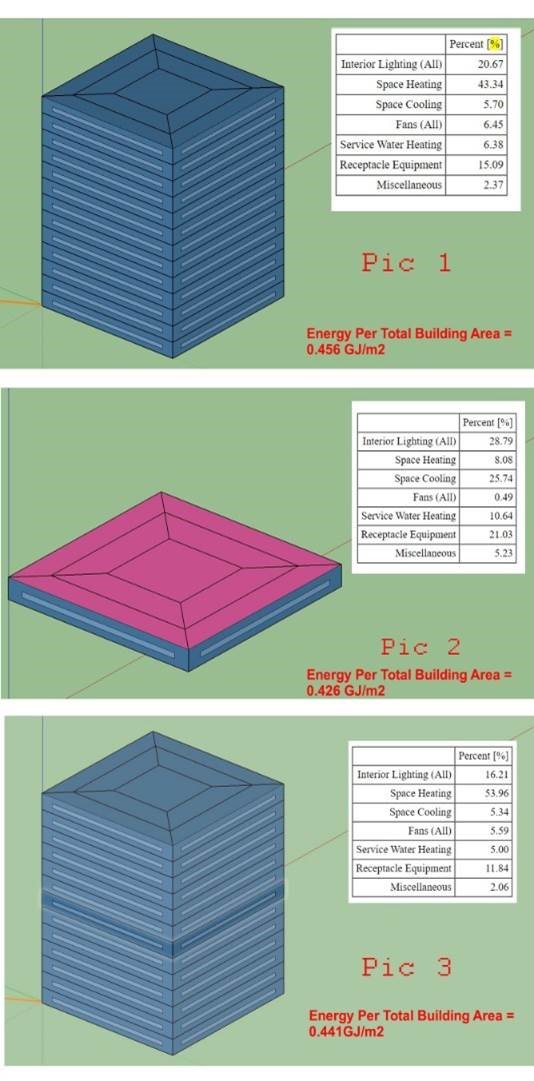I was working on an energy simulation of a 13-story office building by EnergyPlus. The building is located in Calgary, Canada (zone 7) and is conditioned by boiler and chiller systems. Meanwhile, I am preparing the model for parametric analysis of its envelope. The issue arises when I started to compare the thermal behavior of a one-story sample, with adiabatic boundary conditions of both ceiling and floor on the 7th floor, with a full-building energy model breakdown. Although "Energy Per Total Building Area" is relatively ok or the new model, energy breakdowns differ from the initial full model. As you can see from the below picture, for a single-story model. The cooling energy demand is about 25% when comparing with heating demand, which is not the case for a cold climate region.

Pic 1: whole building model Pic 2: the one-story model with adiabatic surfaces Pic3: one story model analysis when considered in the whole model
I have noticed similar one-story sample analysis (pic 2) in academic journal papers. However, I hesitate whether an adjusted boundary condition is needed in my case.




